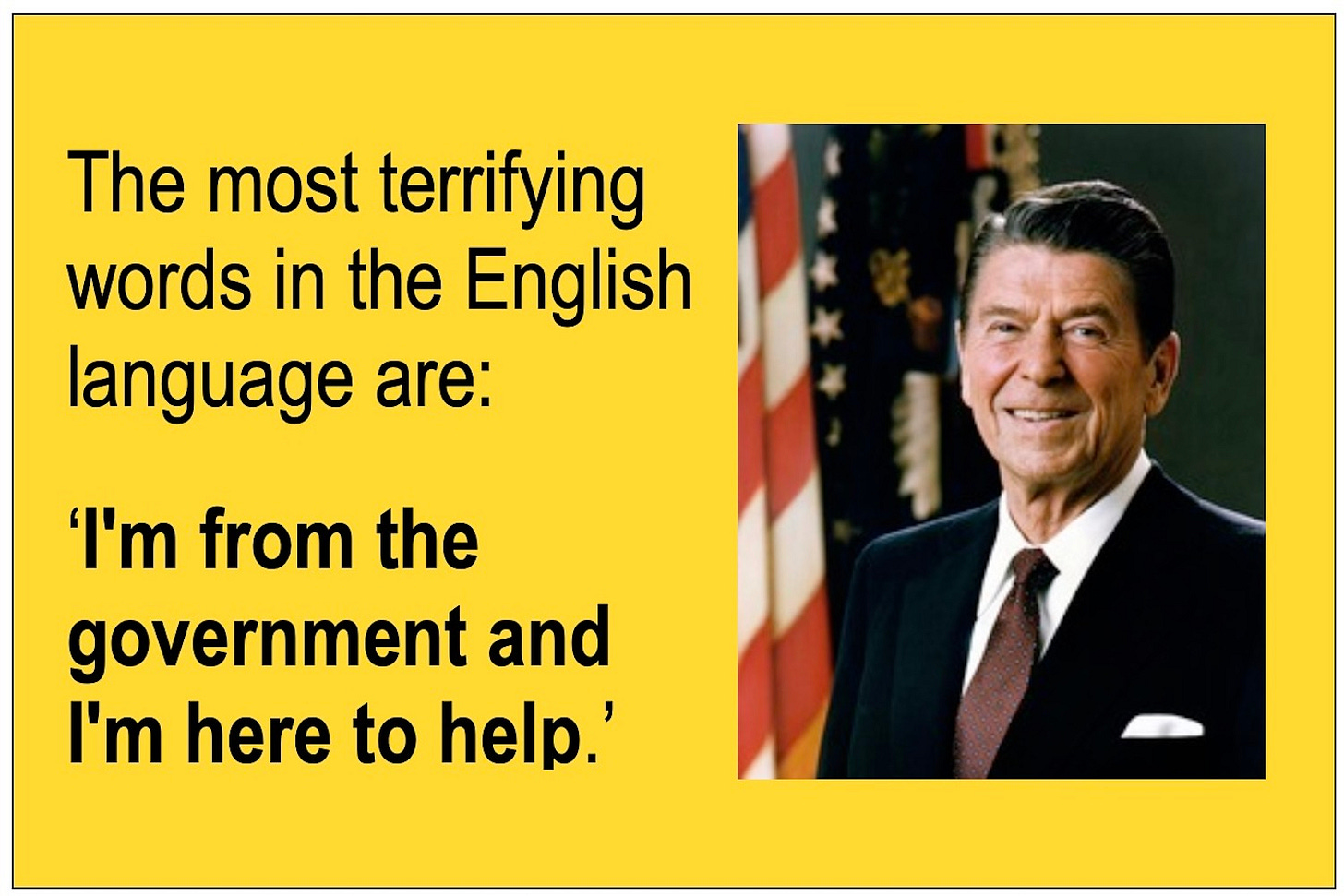Ronald Reagan liked to say “The most terrifying words in the English language are: ‘I'm from the government and I'm here to help.'“ He was absolutely correct, of course. Government is unable to much of anything with competence because of it's very nature. We need look no further than the government obsession with pushing us all into EVs to see the latest evidence of this fundamental truth.
Doug Sheridan, who often writes on LinkedIn regarding energy issues, recently posted a nice description of the bursting EV bubble:
Ford will now cancel production of an electric SUV and delay an electric pickup truck. As a result, it expects to take a $1.9B write-down. Believe it or not, this may be less costly than producing EVs that Americans don’t want. Ford lost an astonishing $44,000 on each EV it sold in the second quarter and expects to lose $5B on them this year.
Stellantis will delay investments to retool its shuttered plant in Illinois for EV production. The stated reason… “it is critical that the business case for all investments is aligned with market conditions and our ability to accommodate a wide range of consumer demands.” Imagine that—catering to consumer, rather than gov’t, demands.
Auto makers’ problem is that California and the Biden Admin are forcing them to make increasing numbers of EVs that are piling up on dealer lots. Companies are slashing prices to sell them, resulting in hefty losses. Meantime, Americans are balking at paying more for gas-powered cars, making it harder for the car makers to use those profits to subsidize EVs.
Such losses and cross-business subsidies aren’t financially sustainable even with generous gov’t subsidies. The Biden Admin last year awarded Ford’s joint battery venture a $9.2B low-cost loan for three giant EV battery factories and last month announced a $335MM grant for Stellantis to convert the plant to build EVs.
IRA tax credits can offset the cost of battery production by 30%. The law also dangles $7,500 for consumers to buy EVs, on top of thousands of dollars in subsidies by many states. Yet, the EV share of auto sales is flagging. One reason may be that climate mandates and regulation have increased electricity prices relative to gasoline.
Anderson Economic Group, LLC Group estimates that mid-sized EVs cost between $12.61 and $16.11 to fuel per 100 miles, compared to $10.71 for gas-powered models. For pickups, the cost differential is larger. CEO Patrick Anderson notes markets signals were telling Ford not to spend on building a big electric SUV.
None of this matters to the Biden Admin… which is hell-bent on forcing an EVs into every garage whether it’s wanted or not. This spring it ramped up GHG emissions standards, which will require companies to produce nearly four electric trucks for each gas-powered model by 2032. The alternative? Buy regulatory credits from the likes of Tesla. Such credit sales have accounted for half of Tesla’s profit this year.
What Sheridan illustrates, first of all, is that government has created the EV bubble by subsidizing it from beginning to end. That’s necessary in government’s view because EVs make no financial sense, of course, as Sheridan also shows us. The subsidies are, in my own humble opinion, designed to:
Reward grifters who are claiming them in one form or another,
Virtue signal with a view toward enhancing political fortunes, and
Establish more control over the traveling public.
This explains why government acts the way it does, but why do big corporations follow? Well, once again there are three reasons, as I see it:
Capitalism has been replaced by corporatism and all want in on the grift,
Corporations are led by human beings subject to peer pressure from elites, and
Corporate leaders are intimidated by what government can do to them.
The inevitable, predictable result of these dynamics is what we see with EVs; an artificial bubble that will, sooner rather than later, burst. That’s where we are today with not only EVs, but also offshore wind and much of the entire renewables scheme. It’s all unsustainable. And, that’s without even addressing the question of whether there is any climate crisis!
#DougSheridan #LinkedIn #EVs #Energy #Climate #Corporatism #Ford #Stellantis






Anderson Economic Group provides the significant economic signal by comparing energy costs per mile between internal combustion engines (ICEs) and EVs: "Anderson Economic Group, LLC Group estimates that mid-sized EVs cost between $12.61 and $16.11 to fuel per 100 miles, compared to $10.71 for gas-powered models. For pickups, the cost differential is larger." Despite all the talk, .U.S. power grids continue to be dominated by fossil energy, including coal to generate electricity. To utilize the benefit of increased fuel economy, my next vehicle will be a ICE hybrid. That's what makes economic and environmental sense.
Under attack from our own government…: green is setting us up for major disaster